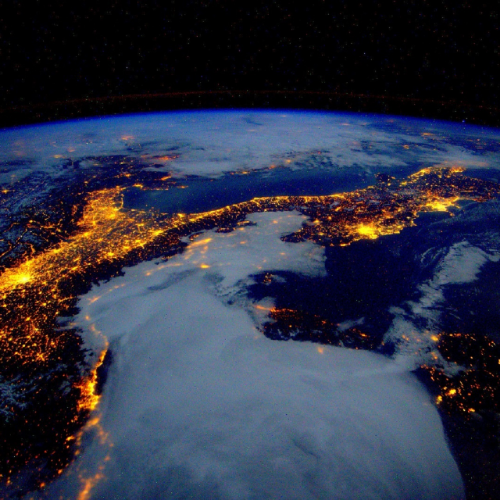WHY CARBON OFFSET?
This is a way that individuals and companies can compensate for their polluting activities or for their consumption of goods and services that generate emissions. It is a way for them to buy carbon credits from ‘green’ projects that ‘save’ or clean up the equivalent carbon dioxide emissions in another place. These offsets or credits are measured in metric tonnes of carbon dioxide (or the equivalent of one tonne of carbon dioxide, in the form of other greenhouse gases).
Read More
A concept that is useful to understand here is that of a carbon footprint. Every single activity you do required resources to make it possible. These resources could be energy, water, minerals and other industrial activities. Each of these activities will generate pollution in one way or another, for the materials to be processed. This pollution can be measured in terms of the amount of carbon dioxide that is emitted in order to make one unit of the goods or services in question. This is the carbon footprint of these goods and services. This carbon (or other forms of greenhouse gas pollution) is released into the environment (as a form of waste) and in turn has consequences for global climate change.
How does offsetting work?
Consumers, whether individuals, small or large companies are all polluting and creating emissions. They can choose to start the journey to carbon neutrality by offsetting their emissions. This is achieved by supporting carbon emission saving projects. These projects can be located anywhere in the world, supporting projects in poorer countries also provides other social and community benefits. For example, a steel manufacturing company in Australia might offset its carbon emissions by buying carbon credits from a solar energy project in South Africa.
Who should offset their carbon emissions?
In short, everyone should offset their carbon footprint impact, whether they are individuals, start-up enterprises, small or large enterprises, NGO’s or governments. We all have a role to play in reducing our consumption and emission patterns, as well as to reduce the burden that climate change is placing on some of the most vulnerable people and countries around the globe.
What are ways that you can offset your carbon emissions?
There are plenty of options that you can try to use for offsetting your carbon emissions. Some ideas include:
- Choosing to pay the small additional cost for flying and offsetting the carbon emissions associated with your flight. The money used to buy carbon credits ultimately funds ‘green’ carbon emission reducing projects around the world, such as reforestation or renewable energy projects.
- Decarbonising your supply chain, the most significant improvement you can make in your business. Buying goods and services from vendors that are carbon neutral or are transitioning to a net carbon zero position.
- Educating your supply chain to your preference for environmentally sustainable products helps them understand interest and consumer sentiment. In turn companies then transition to reduce their impacts e.g., by reducing the amount of packaging, by ensuring that they recycle, offering recycling of their product, water usage reductions, green power, transitioning to a carbon neutral position themselves.
- Offsetting vehicles and fleet vehicle carbon emissions.
- Support projects that carry out carbon offsetting activities (e.g., tree planting projects)
Read Less




Why Carbon Offset?




This is a way that individuals and companies can compensate for their polluting activities or for their consumption of goods and services that generate emissions. It is a way for them to buy carbon credits from ‘green’ projects that ‘save’ or clean up the equivalent carbon dioxide emissions in another place. These offsets or credits are measured in metric tonnes of carbon dioxide (or the equivalent of one tonne of carbon dioxide, in the form of other greenhouse gases).
Read More
A concept that is useful to understand here is that of a carbon footprint. Every single activity you do required resources to make it possible. These resources could be energy, water, minerals and other industrial activities. Each of these activities will generate pollution in one way or another, for the materials to be processed. This pollution can be measured in terms of the amount of carbon dioxide that is emitted in order to make one unit of the goods or services in question. This is the carbon footprint of these goods and services. This carbon (or other forms of greenhouse gas pollution) is released into the environment (as a form of waste) and in turn has consequences for global climate change.
How does offsetting work?
Consumers, whether individuals, small or large companies are all polluting and creating emissions. They can choose to start the journey to carbon neutrality by offsetting their emissions. This is achieved by supporting carbon emission saving projects. These projects can be located anywhere in the world, supporting projects in poorer countries also provides other social and community benefits. For example, a steel manufacturing company in Australia might offset its carbon emissions by buying carbon credits from a solar energy project in South Africa.
Who should offset their carbon emissions?
In short, everyone should offset their carbon footprint impact, whether they are individuals, start-up enterprises, small or large enterprises, NGO’s or governments. We all have a role to play in reducing our consumption and emission patterns, as well as to reduce the burden that climate change is placing on some of the most vulnerable people and countries around the globe.
What are ways that you can offset your carbon emissions?
There are plenty of options that you can try to use for offsetting your carbon emissions. Some ideas include:
- Choosing to pay the small additional cost for flying and offsetting the carbon emissions associated with your flight. The money used to buy carbon credits ultimately funds ‘green’ carbon emission reducing projects around the world, such as reforestation or renewable energy projects.
- Decarbonising your supply chain, the most significant improvement you can make in your business. Buying goods and services from vendors that are carbon neutral or are transitioning to a net carbon zero position.
- Educating your supply chain to your preference for environmentally sustainable products helps them understand interest and consumer sentiment. In turn companies then transition to reduce their impacts e.g., by reducing the amount of packaging, by ensuring that they recycle, offering recycling of their product, water usage reductions, green power, transitioning to a carbon neutral position themselves.
- Offsetting vehicles and fleet vehicle carbon emissions.
- Support projects that carry out carbon offsetting activities (e.g., tree planting projects)
Read Less
Why Carbon Offset?
What does offsetting mean?
This is a way that individuals and companies can compensate for their polluting activities or for their consumption of goods and services that generate emissions. It is a way for them to buy carbon credits from ‘green’ projects that ‘save’ or clean up the equivalent carbon dioxide emissions in another place. These offsets or credits are measured in metric tonnes of carbon dioxide (or the equivalent of one tonne of carbon dioxide, in the form of other greenhouse gases).
Read More
A concept that is useful to understand here is that of a carbon footprint. Every single activity you do required resources to make it possible. These resources could be energy, water, minerals and other industrial activities. Each of these activities will generate pollution in one way or another, for the materials to be processed. This pollution can be measured in terms of the amount of carbon dioxide that is emitted in order to make one unit of the goods or services in question. This is the carbon footprint of these goods and services. This carbon (or other forms of greenhouse gas pollution) is released into the environment (as a form of waste) and in turn has consequences for global climate change.
How does offsetting work?
Consumers, whether individuals, small or large companies are all polluting and creating emissions. They can choose to start the journey to carbon neutrality by offsetting their emissions. This is achieved by supporting carbon emission saving projects. These projects can be located anywhere in the world, supporting projects in poorer countries also provides other social and community benefits. For example, a steel manufacturing company in Australia might offset its carbon emissions by buying carbon credits from a solar energy project in South Africa.
Who should offset their carbon emissions?
In short, everyone should offset their carbon footprint impact, whether they are individuals, start-up enterprises, small or large enterprises, NGO’s or governments. We all have a role to play in reducing our consumption and emission patterns, as well as to reduce the burden that climate change is placing on some of the most vulnerable people and countries around the globe.
What are ways that you can offset your carbon emissions?
There are plenty of options that you can try to use for offsetting your carbon emissions. Some ideas include:
- Choosing to pay the small additional cost for flying and offsetting the carbon emissions associated with your flight. The money used to buy carbon credits ultimately funds ‘green’ carbon emission reducing projects around the world, such as reforestation or renewable energy projects.
- Decarbonising your supply chain, the most significant improvement you can make in your business. Buying goods and services from vendors that are carbon neutral or are transitioning to a net carbon zero position.
- Educating your supply chain to your preference for environmentally sustainable products helps them understand interest and consumer sentiment. In turn companies then transition to reduce their impacts e.g., by reducing the amount of packaging, by ensuring that they recycle, offering recycling of their product, water usage reductions, green power, transitioning to a carbon neutral position themselves.
- Offsetting vehicles and fleet vehicle carbon emissions.
- Support projects that carry out carbon offsetting activities (e.g., tree planting projects)
Read Less






